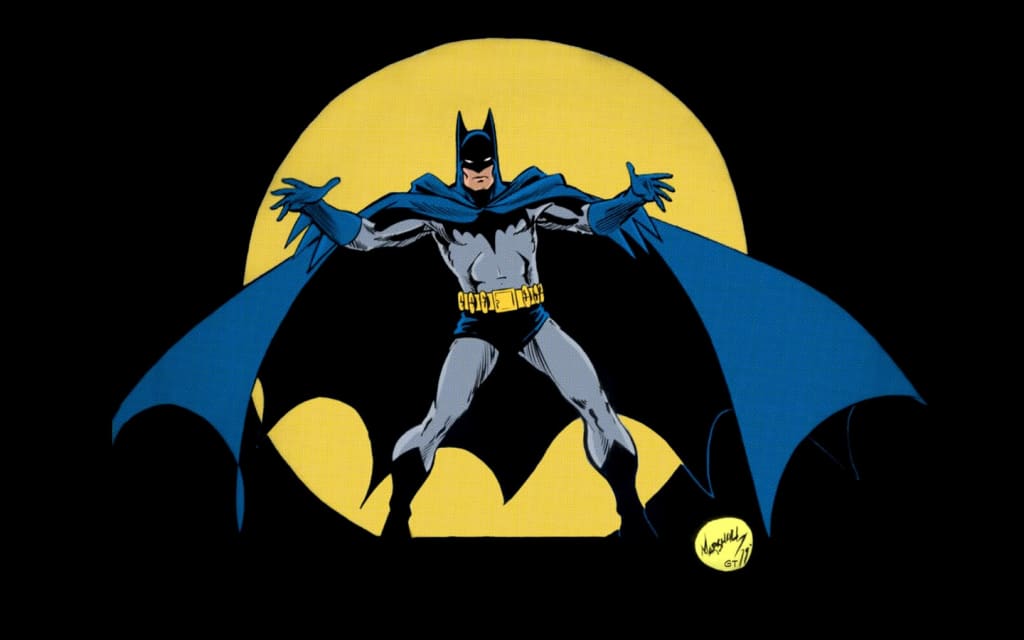Batman: The History and Influence in Today's Society
What makes Batman so appealing to viewers and readers?

According to Ultimate Batman Comics Website, the first Batman story, “The Case of the Chemical Syndicate,” was published in Detective Comics #27 in the May of 1939. Since then, the stories of the legendary Batman have captured the hearts of America’s youth. The stories of Batman have intrigued its readers through all aspects of his character by relating to issues children face and giving them a hero to aspire to be.
Batman was brought to life in 1939 by writer Bill Finger and artist Bob Kane. According to Finger, “Batman was originally written in the style of the pulps,” which was evident with his character showing little to no remorse over killing or maiming criminals. By giving Batman a menacing appearance, the comics actually scared some younger readers. To accommodate for this, Batman’s sidekick, Robin, was introduced to soften the menacing tone. The introduction of Robin also nearly doubled production sales as it sparked a proliferation of “kid sidekicks.” The pulp-inflected portrayal of Batman also took on a completely different turn shortly after the first issue of TheBatman in which he shoots a couple of “monstrous giants” to death. The public had a negative reaction towards this portrayal of Batman, and led editor Whitney Ellsworth to pronounce that Batman “could no longer use a gun or kill his enemies.” This was also where they started introducing words to cover up the fighting that was going on. Words such as “POW,” “BANG,” and “BOOM,” covered up previous illustrations that displayed violent scenes. The stories of Batman also evolved over the years to better fit what was going on in America. Following World War II, the Batman comics drifted away from their previous “bleak and menacing” overtone and became one that instead portrayed him as a “respectable citizen and paternal figure that inhabited a bright and colorful environment.” By making this change to support the change in society, Batman became appealing to more people. Batman’s role as a paternal figure also received criticism shortly after Fredric Wertham publicly displayed his theory that comics that included violence “corrupted the morals of the youth.” Wertham criticized Batman in particular, saying that it had a “homosexual overtone” by displaying Batman and Robin as lovers. Some scholars believe that this is what lead to the introduction of Bat-Woman and even Bat-Girl to refute the allegations of homosexuality in the comics. Shortly following the postwar years, writers and editors steered Batman more toward science fiction as that was what was popular in that time period. These stories included Batman working as a daytime deputy for the police force and going on adventures that included time travel, space, and aliens. The writers kept making changes whenever it was needed to keep the youth interested. The show continued to grow with such rapid popularity that a Batman television show aired in 1966 and continued to increase the net worth of the franchise until its cancellation just two years later. The comics took on another change to accommodate for the loss of revenue and to bring in more sales. DC continued these patterns of changes and still do it to this day.
The plotline of the comics and television shows are only a part of what make Batman such an intriguing superhero. His character itself is also what grabs the attention of its readers and viewers. The story of Batman’s true identity, Bruce Wayne, starts off with great tragedy. According to SuperHero Stuff, after a family outing to the cinema, Bruce and his parents accidentally ventured into Gotham City’s notorious “Crime Alley.” A mugger robs the wealthy family and then shoots both of Bruce Wayne’s parents, killing them right in front of him. It is at this time that the infamous 7-year-old child swears an oath “to rid the city of the evil that had taken his parents’ lives.” While being raised by the family butler, Alfred Pennyworth, Bruce Wayne traveled to every continent to expose himself to skills like criminology, forensics, psychology, manhunting, and martial arts. These series of actions are what encourage readers to do whatever necessary to reach their goals. By mastering every fighting style, Batman was almost guaranteed to win a fight even without special powers. When readers see this, they learn that you don’t need special powers or abilities. Batman, AKA Bruce Wayne, is the perfect example of an ordinary person whose will and determination are what give him success. This is something that anyone can do. The learning of criminology, forensics, and psychology also give the character a formal education that readers can aspire for. Upon returning to Gotham City, Bruce attempted to perform justice on the streets which quickly backfired as he was the one that received the most damage. Even with this setback, Wayne didn’t give up, but instead came up with a new plan that created his alter-ego. This teaches readers the important life lesson of never giving up. Throughout the tales, Batman always acted for the good of others, never using his abilities for his own personal gain. People reading the stories are encouraged to not abuse power by the example that Batman sets. Bruce Wayne’s actions and history are part of what readers find so appealing. Batman is a character that they can relate to.
In addition to the plot and characterization, Batman’s abilities and gadgets also draw in attention to the character. As stated before, Bruce Wayne traveled to different continents to learn and master every fighting style. This gives the stories more action that easily attracts attention, especially for younger readers. Also mentioned before, Batman has no special powers. Instead he has his martial arts fighting abilities and an endless supply of gadgets and technology. Being the CEO of Wayne industries, Bruce Wayne is a very wealthy man that puts his money into building gadgets to take down Gotham’s criminals. In the tales, it seems that Batman has gadgets for everything he does. Two of the most iconic are the Bat-mobile and the Bat-copter, both of which are specially designed transportation devices that signify the driver/owner. Both of these have a high-tech remote control that allows Batman to drive his car without being in it. These add appeal to the character as every reader finds interest in crime fighting in state-of-the-art machines. Batman’s utility belt is also an iconic gadget. The belt can turn into a weapon of Batman’s choosing. His mask/cowl also has a few hidden abilities. According to Geek Tyrant, Batman has a built-in lie detector “hidden in his cowl” that can read heart rate and body temperature and can report to Wayne, via messages in his cowl’s lenses, to see whether the criminal is lying to him or not. Another small, hidden weapon is his finger taser, hidden on the tip of his index finger. One of the simplest of Batman gadgets is his fake vampire teeth. Wayne uses this so that criminals truly believe that he is a creature to be feared. All of these and the many other Batman gadgets attract the attention of readers and may even encourage them to go out and buy a replica for their own play.
In conclusion, Batman’s story has intrigued its readers through all aspects of his character by relating to issues children face and giving them a hero to aspire to be. Doing this is what has helped the Batman franchise thrive for so long. Batman has served as an inspiration to readers and even was the focus of some’s childhoods. Life lessons were taught and demonstrated that readers will never forget. In the words of Bruce Wayne himself, “It’s not who we are underneath, but what we do that defines us.”
About the Creator
Peyton Morris
College students writing about whatever I can think of, a few of my stories are college essays so that's why they sound kind of professional. Once Upon a Time lover - obviously.






Comments
There are no comments for this story
Be the first to respond and start the conversation.